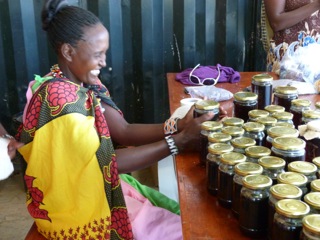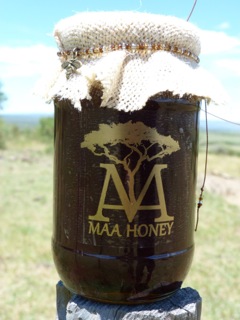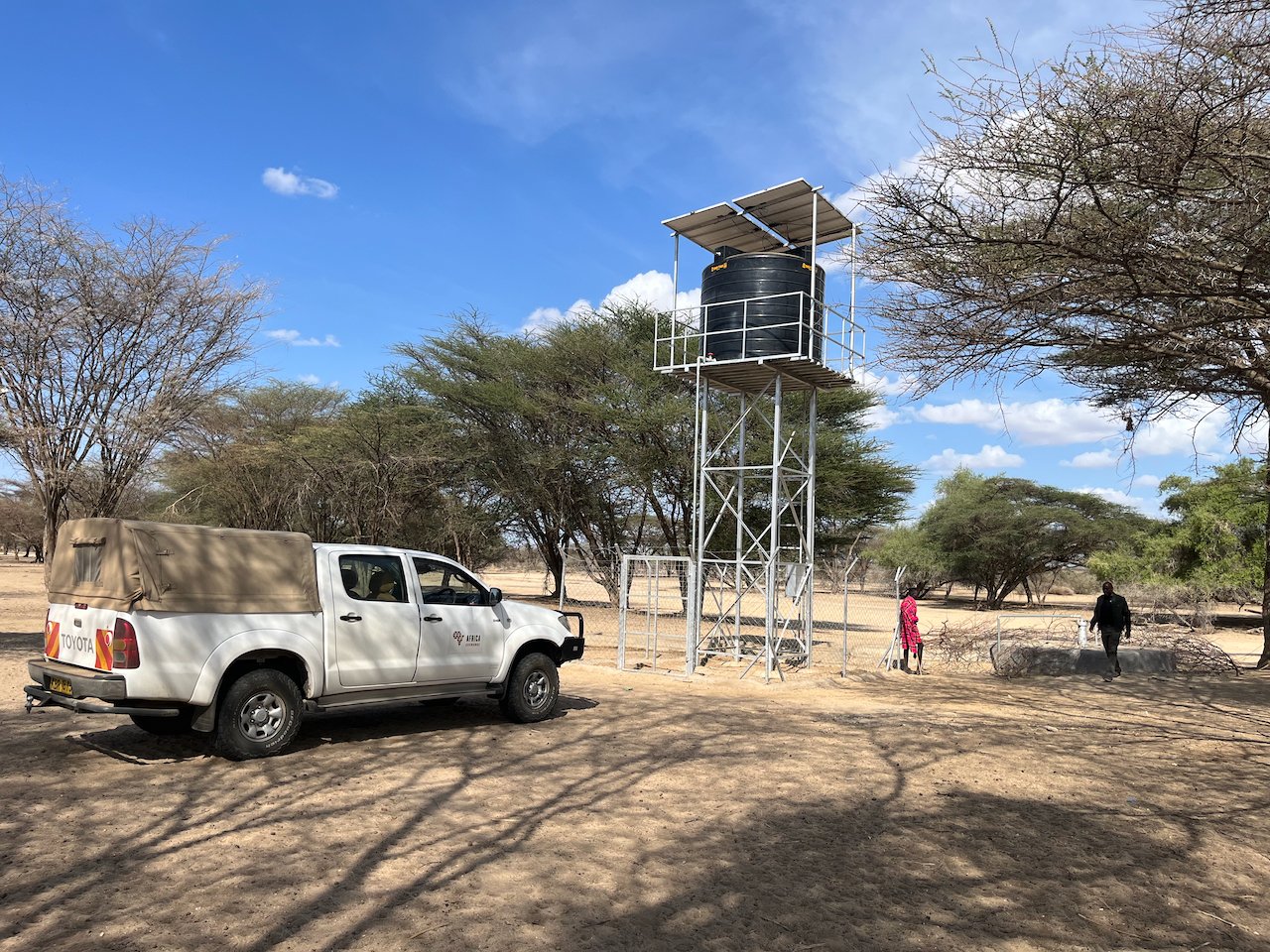
BLOG
Our latest accomplishments, progress reports, & musings.
Self Help Groups Promote Resilience
SHG training session, Wamaganga
Since the inauguration of Change for Children in 2005, Africa Exchange has recognized that community capacity building lies at the heart of any successful transformational development initiative. The formation of community committees to initiate, monitor and evaluate progress at each of the established Integrated Child Development Centers has proven to be essential for their survival and proper functioning.
Recognizing our need to enhance and multiply this process in surrounding communities, David Harding of Water is Life introduced us to Tear Fund Kenya to facilitate training in the establishment of Self Help Groups (SHGs) at our project sites. Organized by Mark Okello, Change for Children coordinator, trainings brought together facilitators and key project staff from each ICDC unit for comprehensive trainings in 2016 and 2017. These trainings have to date resulted in the establishment of 15 SHGs associated with our 8 program locations.
A key component of SHGs are micro saving schemes controlled by group members to reduce vulnerability and enhance resilience. Extensive research from Tear Fund in East Africa shows that SHG establishment impacts communities in the following important ways: drought mitigation, food security, household economy, women’s empowerment, social development and community advocacy.
While we are still new at this, the SHG approach promises to be a foundational tool for decreasing the vulnerability of developing communities.
Development Challenges
Loita Hills forest, on the Southwestern boundary of the Maasai Mara Reserve
Nathaniel Robinson has worked with Africa Exchange on many occasions over the past 12 years. From 2009 - 2010 he served as the Development Initiatives Coordinator for Africa Exchange. Since then, he has worked in the Maasai Mara, focusing his attention on the complex dynamics between conservation and development. Currently he is completing his PhD at the University of Montana in Forestry and Conservation Sciences. In January, Africa Exchange funded his trip to Kenya where he worked with a few of Africa Exchange’s partners.
Three years is a long time to be away from a place that was once home, especially a place like Kenya. Kenya is changing incredibly fast. An average economic growth rate of more than 5% over the past 10 years is reflected across the landscape. Roads and railways are being built and expanded. Towns across the country are bursting with new development. Agriculture is expanding into places we once thought couldn’t be farmed. The technology revolution is alive and well across Kenya. In the most remote places, you can find people checking Facebook on their smart phones. You can tweet from the middle of the Mara. By many metrics, Kenya is becoming a development success story. The middle class is growing. Life expectancy is increasing. Illiteracy is decreasing. Businesses are thriving. In just three years, some areas of Nairobi, a place I called home for over 20 years, are unrecognizable, filled in with swanky malls and high rise apartment complexes and new super highways. There is no doubt that for many people across Kenya life is improving.
Had I not left for three years, the changes may not have felt so dramatic, they may have felt more gradual, or may have even gone unnoticed. In this way, leaving for a time can be a gift. It brings a different perspective to places undergoing rapid change. The contrast between memories of the past and perceptions of the present illuminates what is being gained and what is being lost. This perspective is crucial as what is being lost is often overshadowed by the measurable metrics of progress. The losses are often harder to see, more nuanced, difficult to measure, and tend to affect vulnerable (human and non-human) populations the most.
Travelling from Nairobi to the Maasai, this pattern is clear. Expansion of towns, settlements, and agricultural is having tremendous consequences. Marginalized people lose access to key resources. Wildlife lose critical habitat, and migration routes are cut off. Like the American West, the landscape is rapidly filling up with fences, as individuals attempt to protect their small pieces of land. One recent study shows that the land area fenced across the Mara ecosystem has increased by 20% since 2010. Another recent study estimates that wildlife populations have declined on average by 68% since 1977. History has shown us this before. The western United States was once home to some of the largest populations of animals. Up to 60 million Bison roamed across North America before European settlement. By 1900 there were little more than 10,000 of these creatures left. Luckily, through many conservation efforts and initiatives, Bison were not lost completely, and populations have recovered (slightly) over the past 100 years. But there may never again be large herds of free roaming Bison across the North America. This is a seemingly inevitable cost of development.
But this does not have to be the cost of development. And this is key to the vision of Africa Exchange, with many of their partners working across Kenya. It recognizes that the practices and ideas that can transform our paradigms of development, that integrate the well-being of people with the long-term well-being of the environment, not only exist today but are often rooted in the deep cultural heritage of people groups across Kenya. It recognizes that we from the West, may have substantial resources to offer, (e.g. capital & technology), but that we have as much, if not more to learn.
I hope that my trip to Kenya in January reflected this vision. Through a small workshop at the Maa Trust in the Maasai Mara, I shared my PhD work, focused on developing new tools for monitoring and managing ecosystem conservation across broad scales. At the same time, I came away with renewed insight as to how these tools can be put to better use, to support the work of organizations and people on the ground. I came away with renewed energy, believing that the negative consequences of development are not inevitable, but can be minimized, stopped and reversed. But it all starts with a mutual exchange of respect, ideas, skills, and understanding. This mutual exchange is the essence of Africa Exchange’s involvement in Kenya.
Environmental Impact Tour
In July of 2017, Africa Exchange partners with the Cooperative Baptist Fellowship to advocate for environmental conservation and creation stewardship during a planned 2 week tour of 5 ecosystems in Kenya. Students and young leaders drawn from across the fellowship will immerse themselves in the culture and context of each ecosystem to celebrate biodiversity and learn methods of advocating for greater awareness of the global environmental challenges we face. Contact us here for more information.
Scholars Aim High!
Thanks to the generous support of partners, the Africa Exchange Scholars program is able to provide opportunities for secondary education to select students who began their education at one of our 8 Integrated Child Development Centers scattered around Kenya. One exceptional student from each community who has successfully completed primary school is selected by each ICDC committee and confirmed by Change for Children coordinator Mark Okello. That student is then provided a full four year secondary school scholarship to attend one of several provincial or national boarding schools.
This November, all 7 current students gathered in Nairobi for a two day outing including a trip to the top of the Kenyatta International Conference Center. Change for Children Coordinator, Mark Okello, led the group as they visited cultural sites, ate and met and reflected together and generally had a great time. Congratulations to each of these for the progress so far and we look forward to adding to their number next year!
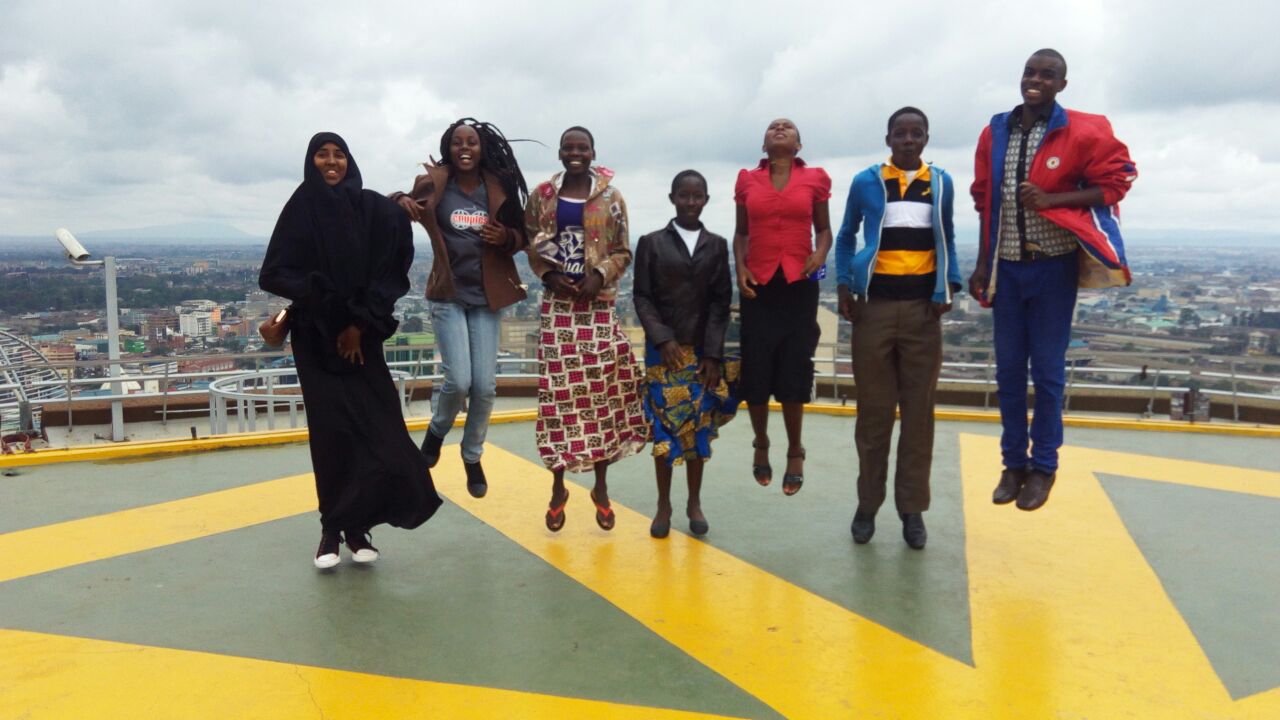
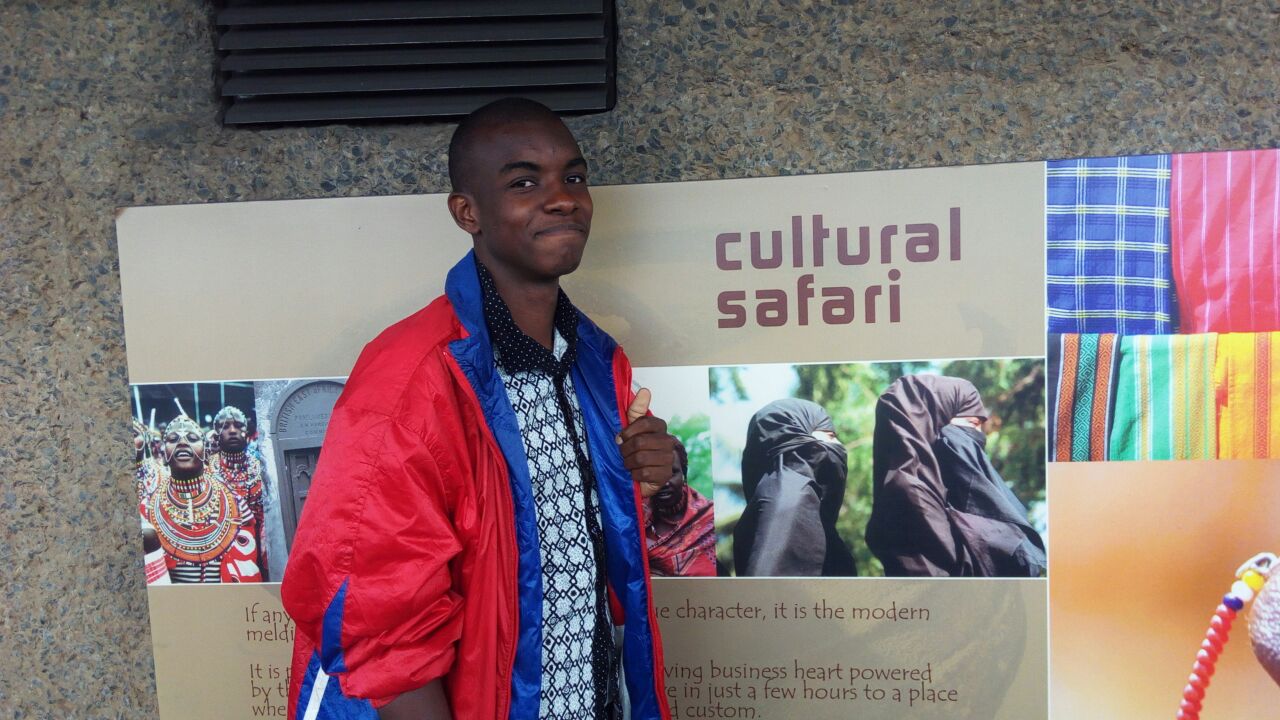
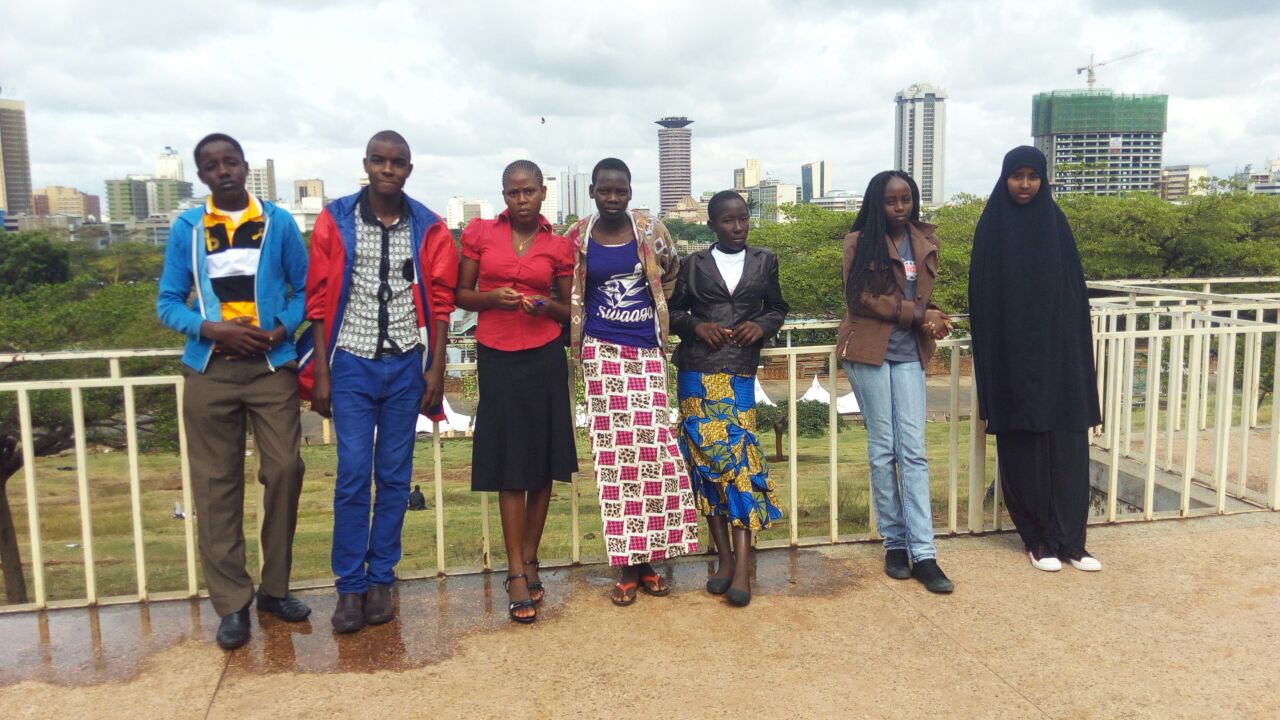
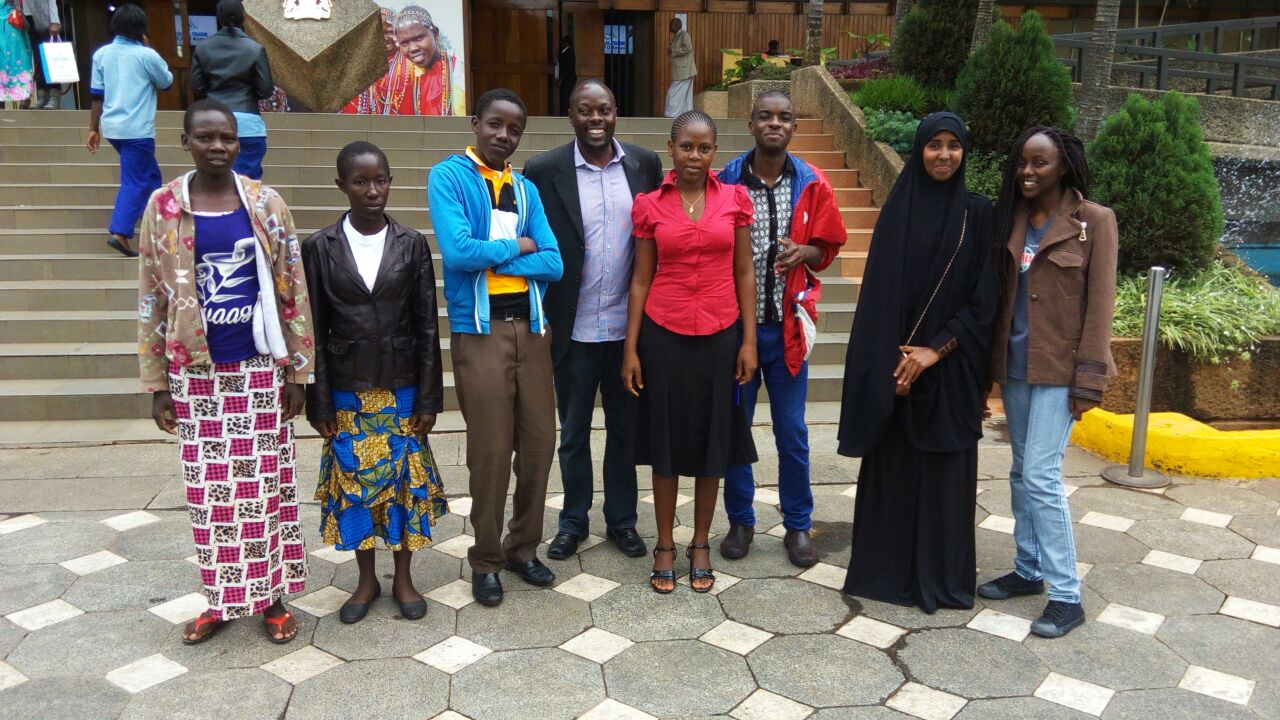
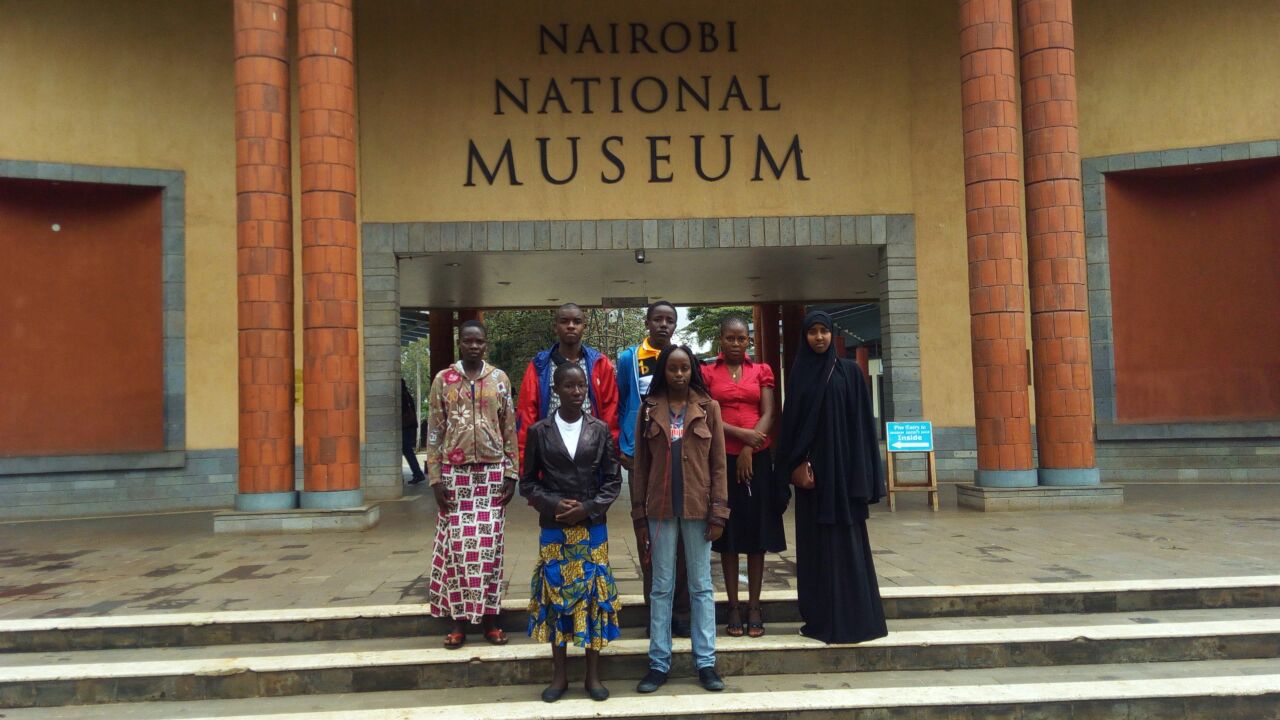
Maa Honey for Maa Trust
Since our donation of extensive honey production equipment in 2015, The Maa Trust and the women they work with have successfully harvested approximately 50kg of honey, all of which sold out immediately to camps throughout the Mara!
The acacia trees are now starting to bloom again and the 74 women who make up this cooperative are now eagerly awaiting their next harvest in August.
With additional support of 60 supers this year, the women are now able to immediately replace suppers when they are collected, and in some cases put two suppers per hive to allow for double yield.
Previously the hives were located in community areas, but this proved troublesome, as it was hard for Trust employees to access, maintain and protect the hives. Consequently hives were moved into the conservancies at easy-to-monitor locations that provide security and short distances for the bees to fly to pollinate the abundant flowering trees and plants.
For the The Maa Honey Collective, life is sweet!
Internship with Orkonyi Welfare Association, Loita Hills

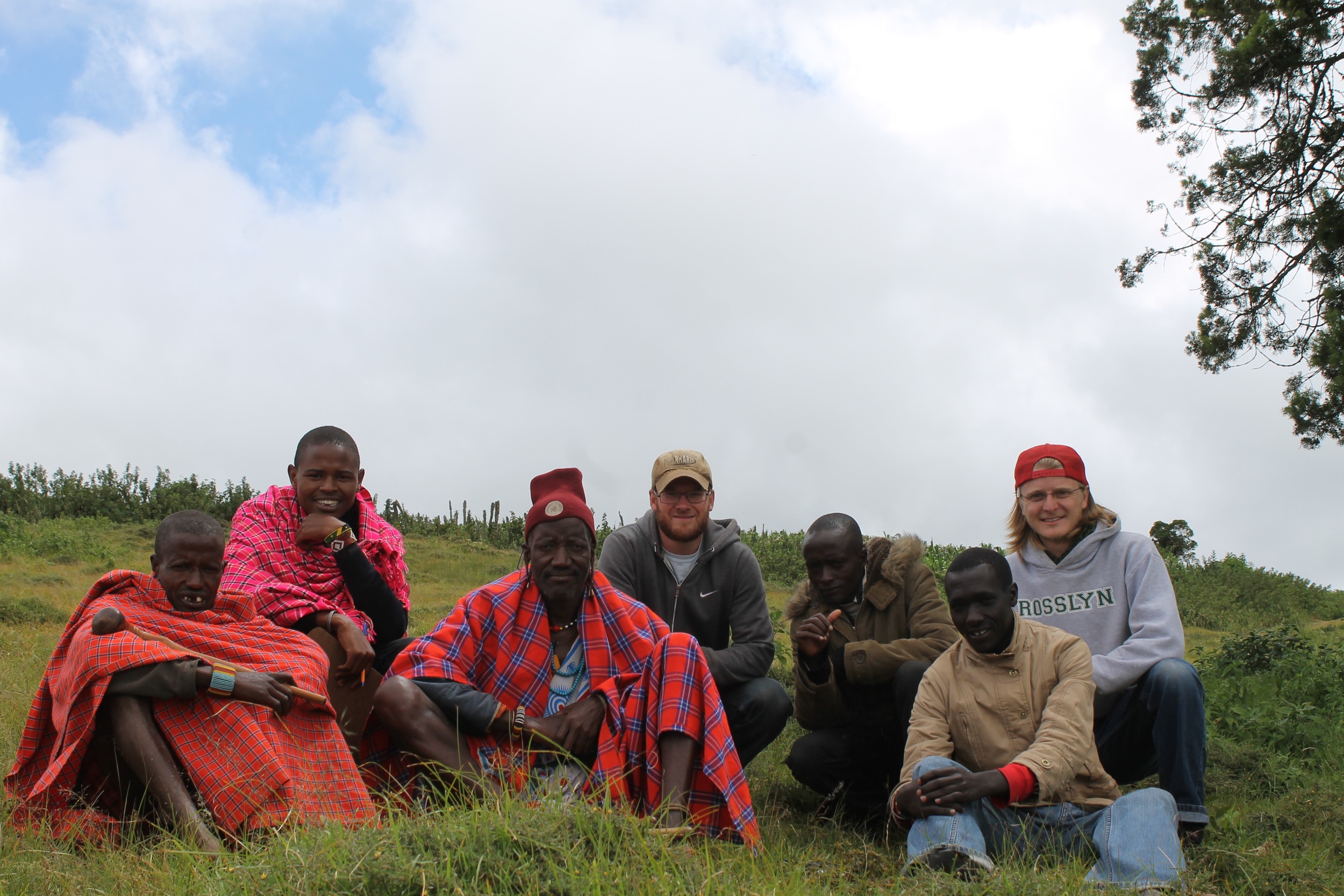
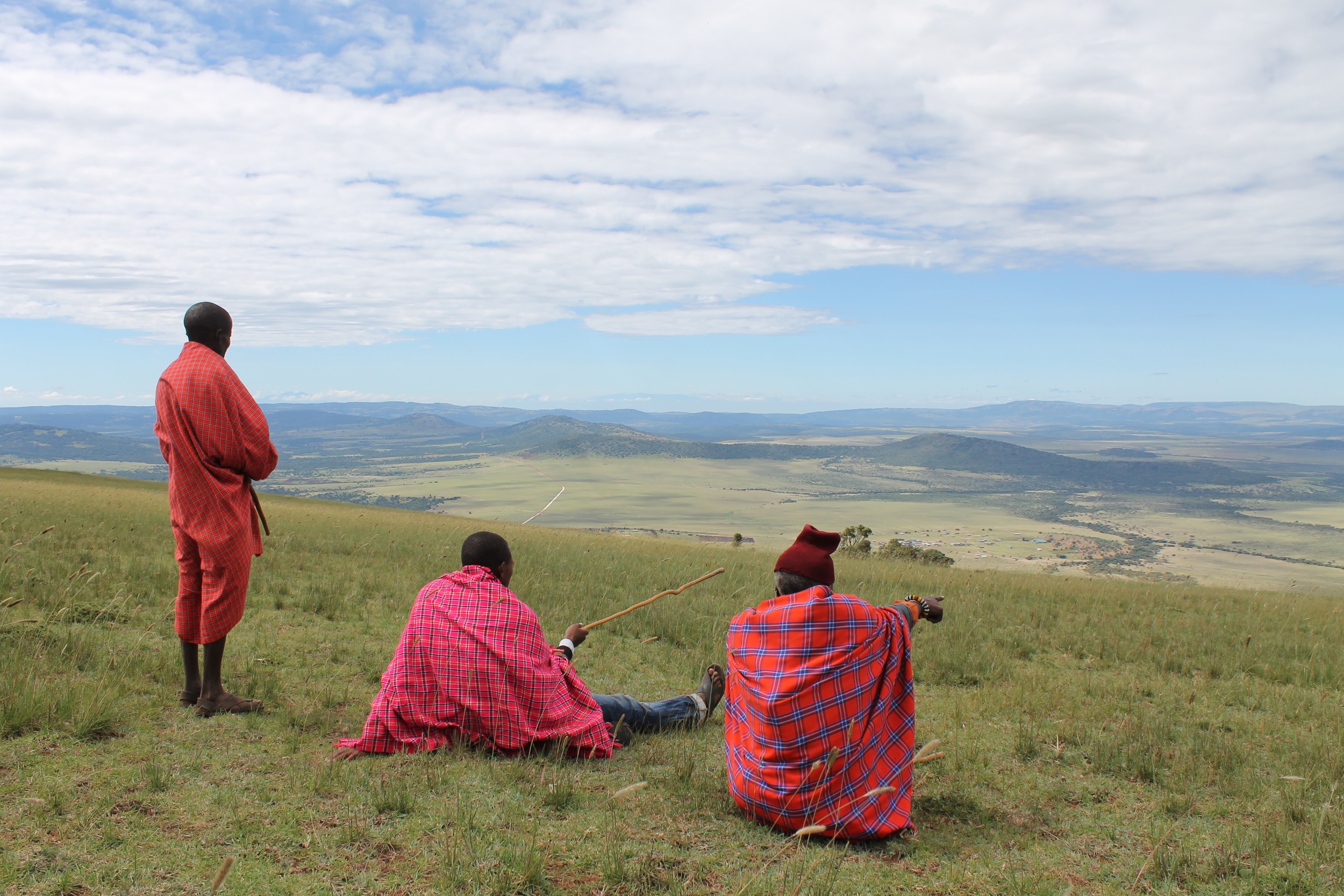
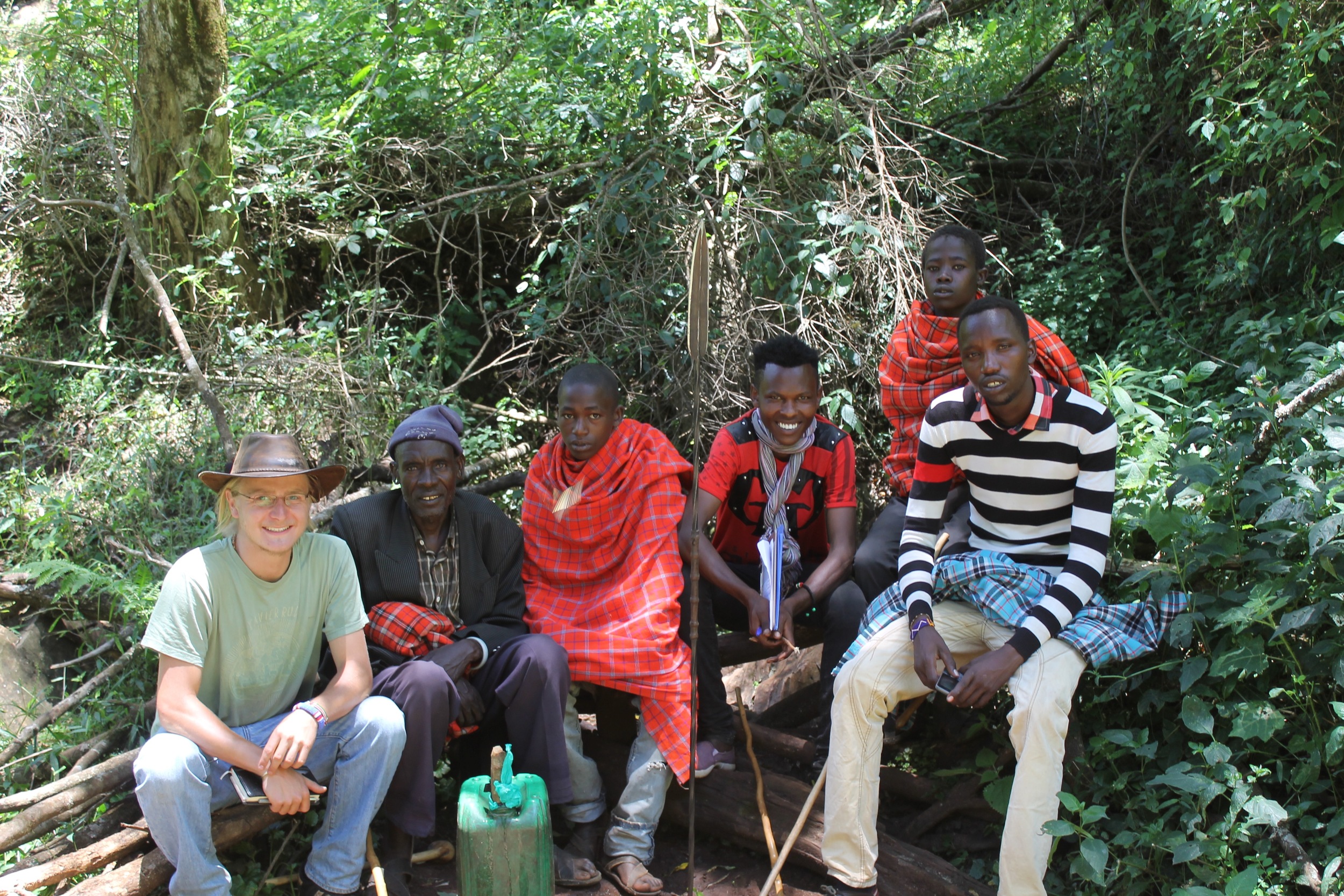

Michael Barton and Chris Harrell narrate their experience as Africa Exchange interns with Orkonyi Welfare Association in the Loita Hills of Kenya . . .
The Maasai’s second most sacred site after Ol'doinyo Lengai, is the Naimina Enkiyio Forest, (Maa for “Forest of the Lost Child”). High in the Loita hills along the Kenya/ Tanzania border, this highland forest is nestled between the harsh soda flats of Magadi and the expansive savanna of the Maasai Mara. Like many of the world’s remaining natural heritage sites, the future of the Naimina Enkiyio forest is filled with many challenges. Anthropogenic influences, both local and global, will determine this forest’s future. The question arises, who and what will benefit over the next decade of this forest’s future and who or what will suffer the losses?
As an outsider who doesn’t know the deep traditions of the Maasai culture, it is hard to grasp the dynamic nature of their reverence for the Naimina Enkiyio. The feeling first comes a long way before one actually enters the forest. Climbing up the escarpment of the Loita hills from the dusty, dry Narosura plains, one can hardly believe there is a highland forest on the seemingly semi- arid hillsides above you. Yet as the road rapidly ascends to a chilly elevation of over two thousand meters, a literal change of atmosphere can be sensed. Leveling off at the top of the first rise, there is a definite change in the fauna, not yet forest but thick Croton and Oleleshwa bush. This is quickly followed by entering a hidden bowl of savanna grasslands, whose low points are easily defined by strips of Acacia woodland, and its high border ridgelines populated by dense forest.
With too much to see, one’s eyes are drawn to the magnificent height of the Podocarpus trees and the girth of the Strangler Figs. Whilst looking up, the flash of red of a Hartlaub’s Turaco, or the racing black and white of the Colobus monkeys show how many layers of ecological niches this forest must contain. It is quickly apparent that the dynamic nature of the forest will be mirrored in the communities who rely on it. With the question of the management of such an important natural resource, dynamic politics is to be expected.
Our work in the forest was coupled with work in the four Puroko Maasai communities living on the forest’s northern boundary. These four communities, the Kirtilikini, Oltarakwai, Osupuko Oirobi, and the Olemegili make up the newly formed community association called Orkonyil. The Association was developed to give the communities a recognized voice to appeal to the Local and National Governments.
Our role here during the early stages of the new Association, was to help the association and communities to map the complex natural resources they have in the forest and pasture lands, but also to recognize the local human resources present within their communities. Our approach to disseminating this information to both the communities and the Association came through the use of GIS, (Geographic Information System), mapping and resources collection methods.
The GIS mapping portion of the project started with the collection of community resources; those accessible to the whole community, ‘the Commons’. These resources included, schools, clinics, traditional meeting points, churches, duka’s, (local general stores), pasture-lands, and water sources.
Throughout the collection process, we were also able to train a handful of the communities’ youth who had recently graduated from secondary school. During the two-month internship we worked with ten youth from the four communities involved in the Association. These ten ‘Resource Assessors’, (RA), were first introduced to the data collection methods and tools by shadowing us. They would watch and ask questions as we hiked through the forest to service the camera trap grid. They were able to see how the GPS could be used to ‘Mark’, ‘Find’, and ‘Save’ tracks to any destination. Coinciding with the camera trap grid survey we also collected sighting data using an android application called ‘CyberTracker’. This allowed us to customize survey questions, that when answered, built up our GIS with relevant information about the forest. The questions asked had to do with the different kinds of sightings we came across in the forest, such as spoor, markings, poaching, animal sightings and the size of the game trails through the forest. This data revealed some interesting patterns of animal movements such as that of elephant and leopard and reinforced the evidence from the camera traps.
In the final project, we worked on developing and training the RAs in how to use another customized CyberTracker app. This new app was loaded with a survey questions that would help to identify the demographic information from the four communities. Questions were developed to collect data under the two categories of Household information and Livestock information. These questions pertained to issues of household health and education and then livestock health and agriculture practice. With the collection of this geospatial-referenced data, the communities through their Orkonyil Association will more easily be able to recognize the issues faced by the greater community and will be better positioned to address these issues.




